“OK, now I feel like you are attacking me,” Katie said quietly, as she shrank into herself. MTV’s #whitepeople video illustrates Katie’s conviction that People of Color took scholarships that belonged to her. The Pulitzer Prize-winning journalist and filmmaker, Jose Antonio Vargas, shared data illustrating the fact that white students receive a higher percentage of scholarships than students of color. Katie held an expectation of safety; agreement to her is safety and disagreement is an attack.
When was the last time you felt unsafe? With more privilege and power comes higher expectations of safety and comfort, even though this expectation may not be conscious.
Expectations of safety are a privilege not afforded equally in the United States, as illustrated in offices and board rooms but also by police killings of Black folks. In this Leadership & Learning Letter, we’ll unpack the brave space concept as it applies to social justice commitments.
Before we go further, I’d like to share a bit more about anti-racist and justice commitments as a white woman. I spend my days holding space with many white folks, learning from and consulting alongside People of Color; I’ve come to learn that we white folks must dismantle power structures that we benefit from. I honor and welcome critique for myself, grappling, my mistakes, and the harm I cause. I’m committed to increasing awareness and accountability, starting with my own. In fact, I’ll likely read this blog post tomorrow and see more of my mistakes. That's the work! This is my impetus to do better, be a better human, apply my learning and stop protecting my safety. I believe brave spaces are a key to inclusive spaces, centered in belonging.
The concept of safe vs. brave spaces comes from social justice work in higher education settings, where marginalized students observed that when spaces are created and nurtured for comfort when discomfort is eschewed, we reinforce current power dynamics and jeopardize our ability to disrupt inequity.
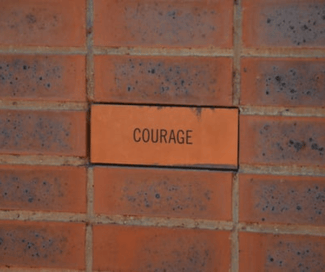 As we grow brave spaces, where discomfort is shared and expected, we begin to disrupt the fact that systems are doing what they were designed to do: perpetuate the current power structure. Arao and Clemens provide an alternate way to frame dialogue around diversity and social justice in a chapter titled “From Safe to Brave Spaces,” found in The Art of Effective Facilitation by Lisa M. Landreman.
As we grow brave spaces, where discomfort is shared and expected, we begin to disrupt the fact that systems are doing what they were designed to do: perpetuate the current power structure. Arao and Clemens provide an alternate way to frame dialogue around diversity and social justice in a chapter titled “From Safe to Brave Spaces,” found in The Art of Effective Facilitation by Lisa M. Landreman.
A "brave space" is the "creation of a challenging environment that encourages equal participation across representative identities.” Bravery is necessary, instead of safety, because “learning necessarily involves not merely risk, but the pain of giving up a former condition in favor of a new way of seeing things.” (Boostrom, 1998)
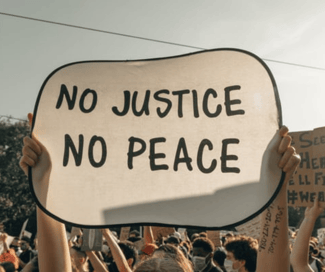 Last year I supported a nonprofit team as they developed their organization’s anti-racist framework. They bravely worked to unpack, unlearn and relearn to identify their commitments. A white woman leader shared at one point “I was quiet prior to this because I was afraid to say the wrong thing. I’ve learned that I can’t be quiet. We have to bravely name the racism, the inequity, and the anti-Blackness that is all around us. I can’t choose safety because my Black and Brown colleagues are never safe.” While true, this made white staff very uncomfortable, and pushback came in overt and passive ways such as:
Last year I supported a nonprofit team as they developed their organization’s anti-racist framework. They bravely worked to unpack, unlearn and relearn to identify their commitments. A white woman leader shared at one point “I was quiet prior to this because I was afraid to say the wrong thing. I’ve learned that I can’t be quiet. We have to bravely name the racism, the inequity, and the anti-Blackness that is all around us. I can’t choose safety because my Black and Brown colleagues are never safe.” While true, this made white staff very uncomfortable, and pushback came in overt and passive ways such as:
Why do we have to talk about racism?
Isn’t ____ (insert other topic) more important than this?
I'm leaving this team/committee/board; you hate white people.
I have so many other responsibilities, am I getting a raise for doing anti-racism work?
These reactions protect the status quo of power, racism, and white supremacy culture. As the team created brave spaces, the pushback was intense. They persisted.
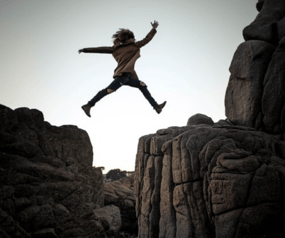
Brian Arao and Kristi Clemens share the following elements found in a brave space. For this context I’ve replaced their word "student" with the word "learner'. (Source: Safe Spaces and Brave Spaces: Historical Context and Recommendations for Student Affairs Professionals, by Diana Ali via NASPA) Brave spaces exhibit the following common rules:
- Agree to disagree: where varying opinions are accepted
- Don’t take things personally: Owning intentions and impacts - in which learners acknowledge and discuss instances where a dialogue has affected the emotional well-being of another person
- Challenge by choice: where learners have an option to step in and out of challenging conversations
- Respect: where learners show respect for one another's basic personhood
- No attacks: where learners agree not to intentionally inflict harm on one another"
The team at Grand Valley State University's Inclusion & Equity Institute summarized Arao and Clemens' work to help us see what brave spaces can mean for those of us with privileged or marginalized identities:
For those with privilege:
- Learning may involve the giving up of a former condition for a new way of doing things.
- It may involve stepping out and engaging in a conversation even when there is fear of getting it wrong.
- It can also mean accepting feedback about being told about an insensitivity, an uninformed perspective, or a micro-aggression.
For those who hold marginalized identities:
- Recognition that sitting during these discussions about inequity may mean feeling vulnerable, exposed, frustrated, angry. There is no choice to only be safe.
- Recognition of the added weight that people may feel as we illuminate the work we have yet to do.
- Elevating the voices of those that live in a place of marginalization is critical - their "knowing" is paramount.
 An executive team member of a national nonprofit shared this recently: “I’m devastated to think our staff don’t all experience belonging. How did I miss this? What do we do about it?” Brave spaces are just one way to start.
An executive team member of a national nonprofit shared this recently: “I’m devastated to think our staff don’t all experience belonging. How did I miss this? What do we do about it?” Brave spaces are just one way to start.
Here are a few practices I’ve seen learning-oriented leaders employ as they grow brave spaces:
Focus on learning more than knowing. A leader in a team I was facilitating asked recently if he needed to attend a part of the training that he had been exposed to already. This is a privilege: to think we “get it” or “understand it” or “have arrived.” Surround yourself with people that encourage your learning more than your knowing.
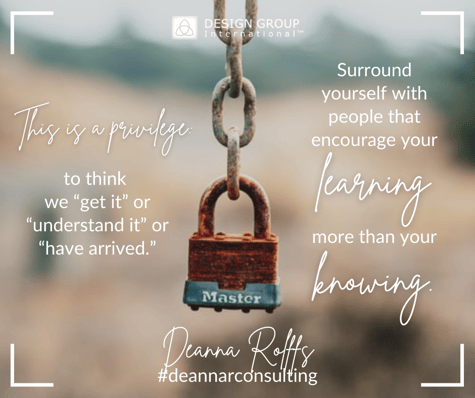
Acknowledge your power and privilege. Sit with it, notice it, use it, spend it to make space for others without savior mentality. Don’t look away.
Listen to those in your life with marginalized identities, without pushback. Based on your privileged or marginalized identities, honor the components of brave spaces that apply to you. Also, don’t presume all folks with marginalized identities consider themselves marginalized, don’t expect them all to want to talk about it, and don’t assume that they experience the world in exactly the same way.
Keep learning about how you react to discomfort. Don’t give up on yourself by sinking back into your comfort. The more I am in brave spaces, the more I crave them because people exhibit honesty, integrity, and truth...and they get a lot of brave $hit done! I’m creeped out by homogenous spaces that cater to the safety of those with power and privilege. Notice the people in your life that sit with you in discomfort; nurture those relationships.
I believe that we can all influence spaces toward bravery. How can you further embrace brave spaces?
Fellow leaders and learners, I wish you courage and resilience for the journey.
Peace to you,


What I’m Reading & Watching
Regarding Safe and Brave Spaces:
- Brave Space Classroom Discussions via Diversity and Inclusion Research & Support Resources at Northern Arizona University [video]
- Safe Spaces and Brave Spaces: Historical Context and Recommendations for Student Affairs Professionals, by Diana Ali via NASPA - Student Affairs Administrators in Higher Education
- From Safe Spaces to Brave Spaces - A New Way to Frame Dialogue Around Diversity and Social Justice, Chapter 8, by Brian Arao and Kristi Clemens via The Art of Effective Facilitation
- Safe and Brave Spaces Whitepaper Release: A Note from the Author via Diana Ali, Associate Director of Policy Research and Advocacy, NASPA
- Brené on Armored versus Daring Leadership, Part 1 of 2 [podcast]

Questions for Consideration
Regarding Safe and Brave Spaces:
- Think about the spaces you inhabit. Who are those spaces safe for? Who are they not safe for? How do you know?
- What reaction do you have to GVSU’s definitions of brave spaces, based on your privileged or marginalized identities?
- If you come from a place of privilege, how often do you think about the lack of safety of your colleagues with marginalized identities? What comes up when you read the five points defining a brave space?
- Where do you feel safe, unsafe, or brave? What does lack of safety feel like? Where do you feel it in your body? How do you react, think, do?
- What is your brave space commitment?

Upcoming
Leadership & Learning Topics:
- Triple Loop Learning Meets Anti-Racism
- The Alluring Lies of Rugged Individualism and Meritocracy
- Do We Have to Call it White Supremacy?

April 21, 2021

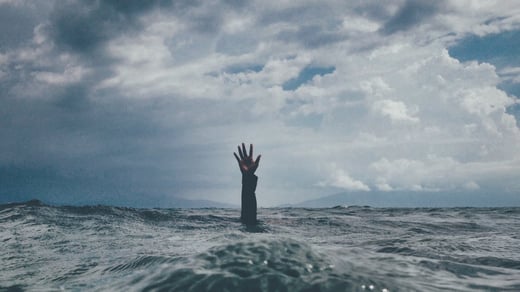

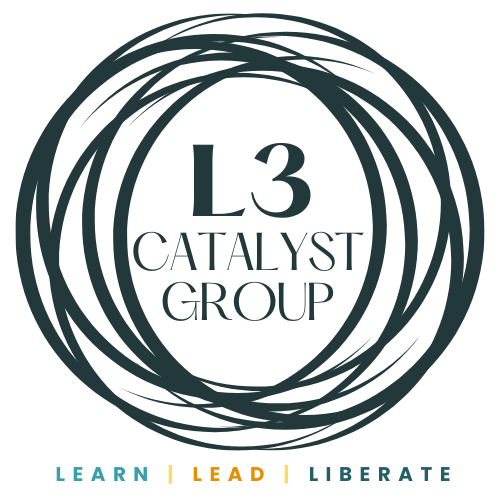
Comments